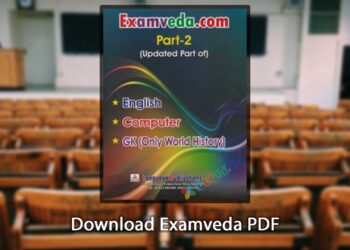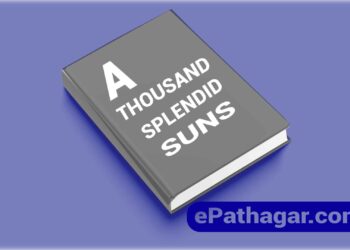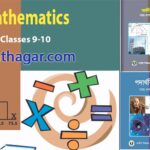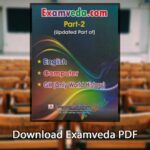The Red Tent by Anita Diamant is a mesmerizing tale that weaves together the lives of women in biblical times, offering a fresh perspective on familiar stories. Set against the backdrop of ancient Canaan, the novel follows Dinah, the daughter of Jacob and Leah, as she navigates the complexities of womanhood within a society dominated by men. The heart of the story lies within the red tent, where women gather during menstruation and childbirth, forming a sacred sisterhood. Through Dinah’s eyes, we witness the power, resilience, and wisdom of these women, whose voices are often silenced in the patriarchal world they inhabit. Diamant’s rich prose brings to life the rituals, traditions, and struggles of these biblical women, offering a poignant exploration of femininity, family, and faith. The Red Tent Book Summary is a captivating tribute to the strength and resilience of women throughout history.
The Red Tent Book Summary Review
Introduction: Anita Diamant’s The Red Tent is a captivating journey through the ancient world of Canaan, offering readers a profound exploration of femininity, spirituality, and the power of storytelling. Set against the backdrop of biblical narratives, Diamant breathes life into the often-overlooked voices of women, centering the story around Dinah, the daughter of Jacob and Leah. Through intricate storytelling and rich prose, Diamant paints a vivid picture of the red tent, a sacred space where women gather during menstruation and childbirth, and delves into the complex dynamics of female relationships within a patriarchal society. In this detailed review, we will delve into the themes, characters, and narrative techniques that make The Red Tent a timeless and compelling read.
Themes: At the heart of The Red Tent Book Summary are several intertwined themes that resonate deeply with readers. One of the central themes is the celebration of womanhood and the reclaiming of female narratives within the biblical context. Through Dinah’s perspective, Diamant offers a counter-narrative to the predominantly male-centric stories of the Bible, giving voice to the experiences, struggles, and triumphs of women. The red tent emerges as a symbol of female solidarity and empowerment, where women find refuge, support, and connection with one another.
Another prominent theme is the exploration of spirituality and ritual. Diamant skillfully portrays the rituals and traditions of ancient Canaanite culture, grounding the narrative in a rich tapestry of religious practices and beliefs. The red tent serves as a sacred space where women engage in rituals related to menstruation, childbirth, and mourning, highlighting the significance of these rites of passage in women’s lives. Through these rituals, Diamant explores the intersections of spirituality, femininity, and community, offering a nuanced portrayal of the divine feminine.
The Red Tent delves into the complexities of family dynamics and relationships. As the daughter of Jacob, Dinah is caught in the midst of familial strife and rivalry, grappling with her identity and sense of belonging. Diamant portrays the intricate bonds between siblings, parents, and spouses, revealing the joys and sorrows that accompany love and loss. Through Dinah’s journey, readers witness the transformative power of forgiveness, reconciliation, and unconditional love, highlighting the enduring strength of familial ties.
Characters: The characters in The Red Tent are vibrant, multidimensional, and deeply human, each contributing to the richness of the narrative. At the center of the story is Dinah, a compelling protagonist whose journey serves as the linchpin of the novel. Through Dinah’s eyes, readers are transported into the world of ancient Canaan, experiencing the joys and hardships of womanhood alongside her. Dinah’s resilience, compassion, and unwavering spirit make her a relatable and inspiring heroine whose quest for self-discovery resonates across generations.
The supporting cast of characters is equally captivating, each bringing their own unique perspectives and experiences to the narrative. Jacob, Leah, Rachel, and the other wives of Jacob are portrayed with depth and complexity, showcasing their strengths, vulnerabilities, and contradictions. Diamant humanizes these biblical figures, portraying them as flawed individuals grappling with their own desires, ambitions, and insecurities. The relationships between the characters are portrayed with sensitivity and nuance, capturing the intricacies of love, jealousy, and sacrifice.
Narrative Techniques: Diamant employs a variety of narrative techniques to bring The Red Tent Book Summary to life, immersing readers in the sights, sounds, and sensations of ancient Canaan. One of the most notable techniques is the use of first-person narration, with Dinah serving as the storyteller and guide. Through Dinah’s perspective, readers gain intimate access to her thoughts, emotions, and memories, forging a deep connection with the protagonist and her journey.
Diamant’s prose is lyrical, evocative, and richly descriptive, transporting readers to a distant time and place with vivid imagery and sensory detail. From the bustling streets of Shechem to the tranquil shores of the Nile, Diamant paints a lush and immersive portrait of the ancient world, capturing both its beauty and brutality. The red tent itself is depicted with reverence and awe, its scarlet folds pulsating with life, mystery, and magic. to first-person narration, Diamant intersperses the narrative with elements of myth, legend, and folklore, adding depth and texture to the story. Through tales of goddesses, priestesses, and wise women, Diamant expands the scope of the novel, weaving together threads of mythology and history to create a rich tapestry of female experience. These interludes serve as a testament to the enduring power of storytelling, highlighting the ways in which women have preserved and passed down their wisdom across generations.
Also Read: On The Road Book Synopsis Review
What are the weaknesses of this book?
The Red Tent Book Summary by Anita Diamant is celebrated for its rich storytelling and vivid portrayal of ancient female experiences, but it also carries some weaknesses that may affect certain readers’ experiences. One notable weakness is its historical accuracy. While Diamant extensively researched the cultural and religious practices of ancient Canaan, some scholars have criticized her interpretation as overly romanticized or speculative. The blending of historical facts with fictional elements may blur the lines between reality and imagination for readers seeking a more strictly accurate depiction of biblical times. the novel’s pacing can be uneven at times. While the early chapters are engrossing and well-paced, the narrative loses momentum in the latter half, particularly in its depiction of Dinah’s exile and subsequent life in Egypt. Some readers may find the pacing slows as the story progresses, leading to moments of disengagement or frustration.
While The Red Tent offers a refreshing perspective on biblical narratives by centering women’s experiences, it also perpetuates certain stereotypes and tropes. The portrayal of women primarily in relation to their roles as wives, mothers, and caretakers may reinforce traditional gender norms and overlook the diversity of female experiences. The novel’s focus on heterosexual relationships and motherhood may limit its relevance to readers seeking more inclusive representations of gender and sexuality. Despite these weaknesses, The Red Tent remains a beloved and influential work of historical fiction, offering readers a compelling glimpse into the lives of women in ancient times and sparking important conversations about gender, spirituality, and storytelling.
The Red Tent book age rating – Suitable ages of readers
The Red Tent by Anita Diamant is generally recommended for mature readers due to its themes, content, and historical context. While there is no official age rating for books like there is for movies or video games, it’s commonly suggested for readers ages 16 and older. The novel contains mature themes such as sexuality, violence, and childbirth, which may not be appropriate for younger readers. Additionally, the book explores complex interpersonal relationships and societal dynamics that may be better understood and appreciated by older teens and adults.
The novel’s historical context, set in ancient Canaan and drawing from biblical narratives, requires a certain level of maturity and critical thinking to engage with effectively. Parents and guardians should use their discretion and consider the individual maturity and sensitivities of younger readers before allowing them to read The Red Tent. It may be helpful for adults to read the book first and assess whether its content is suitable for younger readers.

How the writer could make this book more interesting?
To make The Red Tent even more compelling, the writer could further develop the secondary characters, providing deeper insights into their motivations, struggles, and relationships with Dinah. By fleshing out the supporting cast, the author could create a richer tapestry of interconnected lives, enhancing the sense of community and complexity within the narrative. Additionally, the writer could explore more diverse perspectives and experiences, incorporating voices from marginalized groups such as slaves, servants, or non-binary individuals. By expanding the scope of the story, the author could offer a more inclusive and nuanced portrayal of ancient Canaanite society. Furthermore, the writer could incorporate more elements of suspense and tension, weaving a tighter plot with unexpected twists and turns to keep readers engaged from start to finish. By building anticipation and suspense, the author could create a more dynamic and immersive reading experience, heightening the emotional impact of key moments in the story. Finally, the writer could delve deeper into the themes of spirituality, feminism, and empowerment, offering thought-provoking insights and challenging readers to reconsider their own beliefs and assumptions. By exploring these themes with greater depth and complexity, the author could elevate the synopsis of The Red Tent into a truly transformative and unforgettable work of literature.
Why this book is so popular in the 20th century?
The Red Tent achieved popularity in the 20th century due to several factors. it offered a fresh and compelling perspective on familiar biblical narratives, centering the story around the often-overlooked voices of women. In a time when feminist literature was gaining prominence, Diamant’s novel resonated with readers seeking narratives that celebrated female experiences and challenged traditional gender roles. The Red Tent captured the imaginations of readers with its richly detailed portrayal of ancient Canaanite culture and rituals. Diamant’s vivid prose brought the world of the red tent to life, immersing readers in a captivating tapestry of sights, sounds, and sensations. Furthermore, the novel’s exploration of universal themes such as love, loss, and resilience struck a chord with readers of all backgrounds. By weaving together elements of history, mythology, and spirituality synopsis of The Red Tent offered a multi-layered reading experience that appealed to a wide audience. Lastly, the book benefited from positive word-of-mouth buzz and critical acclaim, garnering praise from readers, scholars, and critics alike. Its popularity was further boosted by book clubs, discussions, and adaptations, cementing its status as a beloved and enduring work of fiction.
Purchase This Book From Amazon
Should this book be worth reading now in 2024?
The Red Tent Review by Anita Diamant remains worth reading in 2024. Despite being published in the late 20th century, the novel continues to resonate with contemporary readers due to its timeless themes, rich storytelling, and compelling characters. Its exploration of female empowerment, spirituality, and the bonds of sisterhood remains relevant in today’s society, where discussions around gender equality and representation are ongoing. the novel’s vivid portrayal of ancient Canaanite culture offers readers a fascinating glimpse into a distant time and place, enriching their understanding of history and human experience. The Red Tent serves as a reminder of the enduring power of storytelling to illuminate the lives and experiences of marginalized communities, including women. Its celebration of female resilience and agency continues to inspire readers of all ages and backgrounds. The Red Tent remains a captivating and thought-provoking work of fiction that merits attention and appreciation in 2024 and beyond.
Conclusion: The Red Tent Book Summary Review
The Red Tent by Anita Diamant stands as a captivating and thought-provoking exploration of womanhood, spirituality, and the power of storytelling. Set against the backdrop of ancient Canaan, the novel breathes life into the often-overlooked voices of biblical women, offering readers a fresh perspective on familiar narratives. Through the eyes of protagonist Dinah, Diamant paints a vivid portrait of the red tent, a sacred space where women gather to find solace, support, and sisterhood. The novel’s rich prose, complex characters, and timeless themes resonate with readers of all backgrounds, inviting them on a journey of self-discovery and empowerment. While The Red Tent Review may have its weaknesses, including occasional pacing issues and historical inaccuracies, its enduring popularity speaks to its lasting impact on readers and its importance in contemporary literature. The Red Tent stands as a testament to the resilience, strength, and wisdom of women throughout history, reminding us of the transformative power of empathy, compassion, and connection.













This Post Has 2 Comments